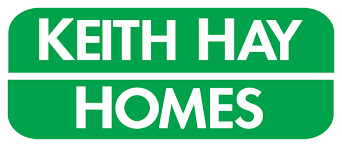Termination is not a get-out-of-jail card for HHS
If you plan to rent out your property for as long as possible without meeting the Healthy Homes Standards, you may be in for a nasty surprise.
A landlord recently mentioned that he has no intention of bringing his rental up to the Healthy Homes Standards because the property is over 100 years old. He will simply rent it out for as long as he can legally (until 30 June 2025) before terminating the tenancy on 1 July with a 90-day notice. While his thinking appears logical, the plan is simply unworkable through the lens of the Residential Tenancies Act (RTA).
The landlord referenced a 90-day notice to terminate. We take it that his is a periodic tenancy. Under the RTA, he can only terminate with a 90-day notice under seven particular circumstances (taken from Tenancy Services’ website):
- The premises are to be put on the market by the owner within 90 days after the termination date for the purposes of sale or other disposition.
- The owner is required, under an unconditional agreement for the sale of the premises, to give the purchaser vacant possession.
- The landlord is not the owner of the premises and the landlord’s interest in the premises is due to end.
- The landlord or owner has acquired the premises to facilitate the use of nearby land for a business activity. That fact is clearly stated in the tenancy agreement, and the premises are required to be vacant of residential tenants to facilitate that use.
- The premises are to be converted into commercial premises for at least 90 days by the landlord or owner.
- Extensive alterations, refurbishment, repairs, or redevelopment of the premises are to be carried out by the landlord or owner, and it would not be reasonably practicable for the tenant to live there while the work is being done. The work must begin, or material steps towards it are to be taken, within 90 days after the termination date.
- The premises are to be demolished and the demolition is to begin, or material steps towards it are to be taken, within 90 days after the termination date.
Non-compliance with the Healthy Homes Standards is not one of them.
Related: How to get instant ROI from Healthy Homes compliance
HHS failure is not a basis for ‘unlawful residential premises’
A lateral-thinking landlord would then say, ‘Ah, but if the house fails the Healthy Homes Standards, then surely that would make the property an unlawful residential premises making it possible for the landlord to apply to the Tribunal for immediate termination under s56A(2).’ If only it were that simple!
S78A (that defines ‘unlawful residential premises’) makes it clear that insofar as s45 is concerned, HHS compliance is not a function of ‘lawfulness’. Existing Tribunal adjudications (such as this one, see paragraph 58 ) support this interpretation. Put another way, a landlord cannot simply manufacture ‘unlawfulness’ by allowing the property to fall into HHS disrepair.
Consequences of non-compliance
A landlord breaches s45(1)(bb) and commits an unlawful act when he fails to comply with the Healthy Homes Standards by the due date. The maximum penalty is $7,200.
Explore exemptions before resorting to termination
We recommend that this landlord (and anyone in a similar position) investigate whether his property qualifies for any HHS exemptions before seeking legal advice on how to withdraw his property from the residential renting pool lawfully.















Add Comment